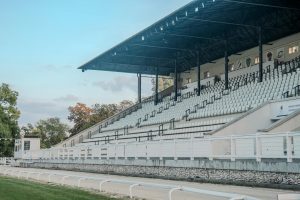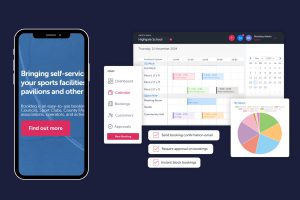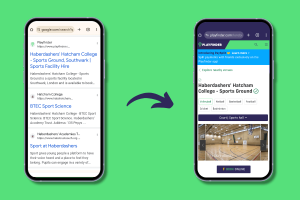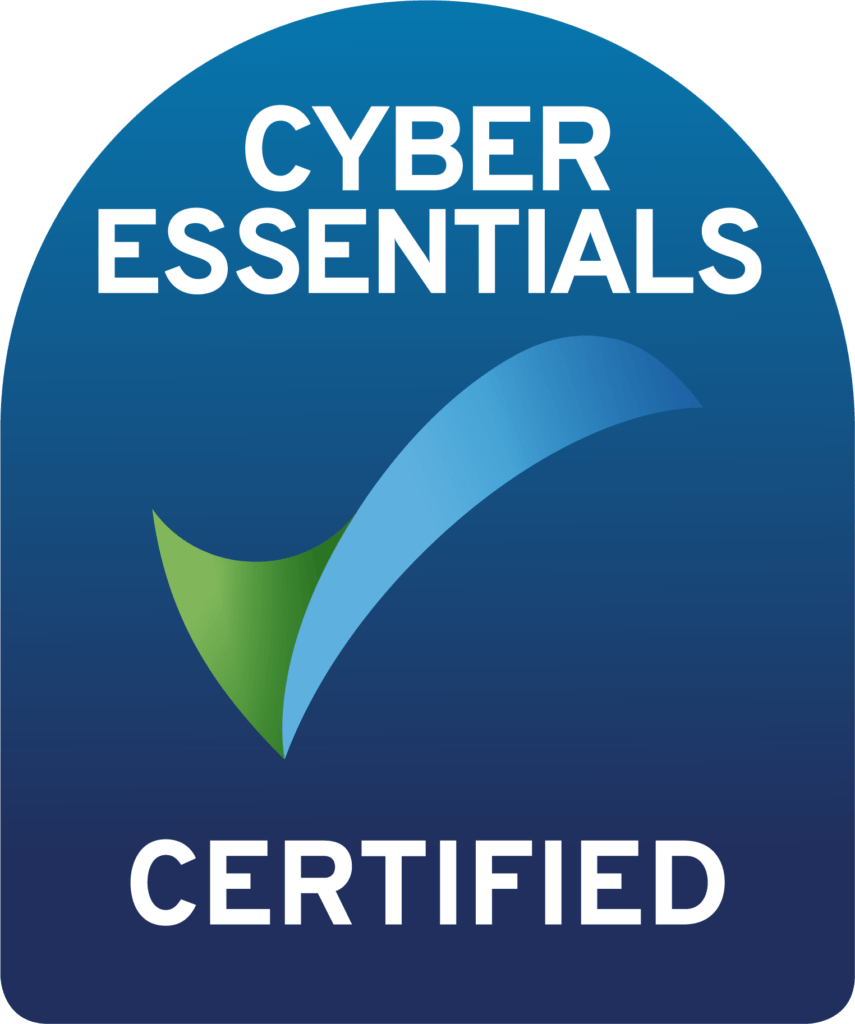Are you getting the most value from your sports facilities?
Whether you’re a local authority, sports club, school or community centre, now’s the time to maximise the amount of revenue from your facilities. It’s easier than you think and can be achieved with a number of straightforward actions.
Read on to find out how you can use your sports facilities to generate revenue.
Why you should be maximising revenue from your sports facilities
The last year has been tumultuous. With the UK Government implementing lockdowns and closing sports and community facilities across the country, we know that many sports clubs and other organisations are feeling the pinch.
With ongoing capacity restrictions still in place, it can be a challenge to achieve the levels of capacity needed to generate sufficient profit for your organisation. But, there are several things you can do to get your finances back on track and maximise the financial return of your facilities.
We’ve set out the actions you can take to increase the revenue from your sports facilities below.

Conduct a low-margin analysis
Before you start looking at ways to make money, you should first identify areas in which you can save money.
You can do this most effectively by conducting a ‘low-margin analysis’. Running this kind of analysis will help you identify any services, classes or equipment which offer only minimal or zero profit margins. An example of low-margin areas could be a class that never fills to capacity or a rowing machine that costs more to maintain than to replace it outright.
To conduct a low-margin analysis of your sports facility, you should examine the following things for each service, class or piece of equipment:
- Labour costs (e.g. cost to clean the room, repairing a piece of equipment, managing reception)
- Hard costs (e.g. cost of cleaning supplies, new parts for equipment, PPE)
- The cost to the customer (e.g. price/revenue)
- Time or opportunity costs (e.g. the amount of time in hours it takes to do the job, run the class, open and close the facility etc)
Having run a full low-margin analysis you should build up a clear picture of which elements offer only small margins and those which are more lucrative and therefore worth focusing on.
On-going low-margin analyses
A low-margin analysis isn’t something you should merely do once by the way. You’ll find it useful to conduct a low-margin analysis on a periodic basis, reassessing older classes, equipment etc, as well as assessing any new classes or equipment you may have introduced.
Over the longer-term, low-margin analyses will help you build a better picture of the profitability of your sport facilities and inform investment decisions. Should you buy a new piece of equipment? Should you invest in a new piece of software to streamline your booking and facilities management? You’ll find it much easier to answer these questions and many others if you conduct low-margin analyses on a regular basis.

Understand your customer base
Every business has a range of different customers; some are more ‘core’ than others. It’s no different for sports facilities. You probably already have an idea of your ‘bread and butter’ customers. It could be that six a side league that hires your football pitch every Tuesday, or it could be that aerobics class that uses your main hall on a Friday night.
Nevertheless, even if you have a pretty good understanding of your current customers, you should try and go beyond an anecdotal understanding and really drill down into your customer base.
Segment your customer base
To improve your understanding of your customer base, you should divide it up into segments. This is a useful way of grouping together your customer base into manageable chunks which you can then analyse.
By separating your customer base into segments you can better market your facilities. Instead of a generic email blast to all of your customers, you can instead create segment specific campaigns e.g. indoor football, aerobics classes.
You can also ensure that your facility is better set-up for each segment. For example, you could invest in new aerobics equipment that’ll make your facilities even better for one of your core customer segments.
Maximise the potential uses of your large spaces
You may have a large sports hall that’s regularly used by a popular aerobics class, but what else could that hall be used for?
You should conduct this thought exercise for all of your large spaces.
Examine the flooring of your spaces
Begin by examining the floor of each space. Will it stand up to multiple different uses and/or sports? For example, you may have flooring in your sports hall which is perfect for badminton or aerobics, but would it also stand up to the rigors of a basketball game or football match? If you think the flooring is up to the job, then start opening up the hall for other types of bookings/classes/uses.

Make your space more flexible
If you have a particularly large hall, you should pay a visit the next time there’s a class or event on and see how much space is actually being used.
If your sports hall is big enough, you may be able to install retractable dividers, nets or baskets, which will allow you to quickly transform your space for multiple uses. With retractable dividers you could even have multiple classes or events running in your hall simultaneously – maximising your revenue.
Although we’ve used the example of a sports hall, you should look at all of your large spaces to see how they could be adapted for the widest possible range of uses. Even outdoor football pitches and tennis courts can be adapted for other uses such as hockey or lacrosse matches with minimal effort.
Invest in quality equipment
As science and technology continue to seep into various sports, it’s no longer just elite athletes that want to make use of the latest, cutting-edge sports equipment.
Today, even amateurs are clamouring to use the very best equipment. So, it can pay to invest in quality equipment for your facility.
Depending on which customer segment provides you with the highest profit margins then you may wish to invest in a suite of new spinning or rowing machines, or perhaps even a simulator or video analysis tool. Whatever you choose, make sure it’s something that will be consistently in demand by your core, high-margin clientele, rather than just a passing fad or trend.
Naturally, introducing a high-end piece of equipment can incur an upfront cost, but if you have accurately calculated demand and priced it appropriately, this can be another great way of generating additional revenue.

Introduce incentives
Repeat bookings are great for sports facilities. They help you manage your cash flow, as you’ll know you’ve got a guaranteed number of bookings each month.
However, competition is fierce at the moment, especially as facilities are beginning to open up following the UK’s lockdown restrictions.
So, now is the time to think about incentivising repeat or block bookings. You could offer a lower on-going price to repeat customers, priority access to their favourite equipment, or firstchoice when it comes to booking the time they want to use a facility.
Another worthwhile incentive is off-peak rates and seasonal discounts. This sort of incentive is ideal if you have times of the week or year when your facilities are under used. For example, you could offer discounted rates at the very beginning of the football season to secure business from new five a side teams. Alternatively, why not consider special rates during major sporting tournaments?
Whatever form they take, introducing incentives is another way of maximising revenue from your sports facilities.

Use sports facility booking software
Are you still using an old ledger and the telephone to take and manage bookings? If you’ve answered yes, then you can be missing out on a significant chunk of additional revenue.
From banking and ordering takeaways to booking a taxi or selecting your next holiday, the way people book things has changed radically in recent years. Gone are the days of sitting on hold at the end of a phone or having to call back because the receptionist is busy.
Thanks to the slick booking and ordering processes offered by brands such as Uber, Just Eat, Amazon and many others, consumer expectations have changed – and unfortunately, the old ledger and telephone won’t cut it anymore.
If you’re not offering your customers an easy and headache-free booking process, you’ll quickly lose them to a competitor.

Make it easy to book
People don’t want the hassle or have the time to complete a word doc booking form, or try ringing a reception time and time again.
People attempting to make a booking want to be able to do it on their smartphone, see what facilities are available (and when), make a payment easily online and perhaps even make recurring bookings (remember that six a side football team – they’ll probably want to book a season’s worth of sessions in one go!).
Think of it this way.
Booking a room or class at your sports facility should be as easy as ordering a pizza on Deliveroo. Remove as many barriers to booking as possible and you’ll see your revenue increase dramatically.
Make the running of your sports facilities simple with Bookteq
You may ask how we know all this. Well, we’re Bookteq,
the leading sports facility booking software and management system!
Our solution is tailor-made to make the booking and management of your sports facilities as efficient and easy as possible.
With Bookteq, you can:
- Increase revenue and utilisation.
- Reduce admin workload.
- Save your team time
- Gain new customers.
What’s more, Bookteq is low cost and easy to use. Not only will it make your customers’ lives easier, but your staff’s too!

